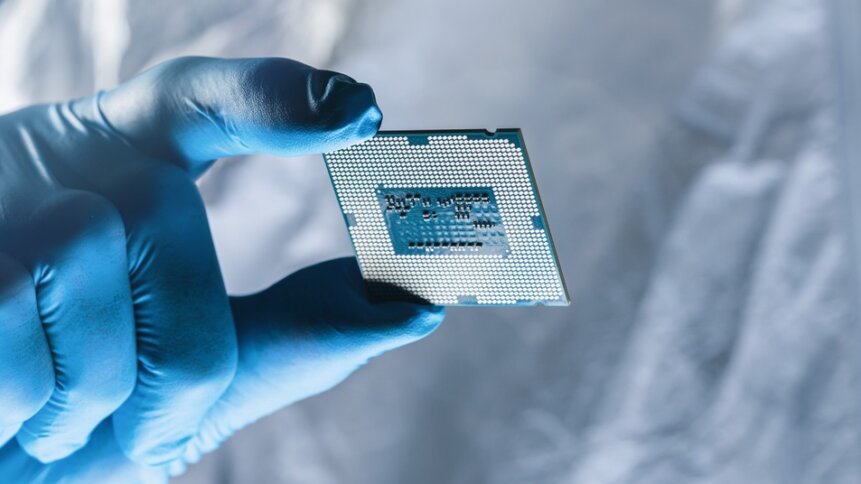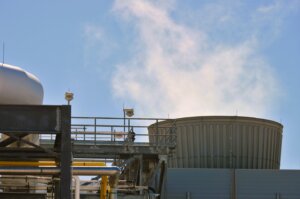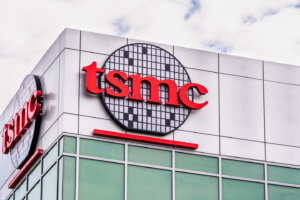
|
Getting your Trinity Audio player ready...
|
- Semiconductor manufacturers pledge to achieve net zero by 2050
- Currently produce millions of tons of carbon dioxide each year
- But they could financially benefit from a move toward renewables
Major chipmakers have ambitious plans to reduce their carbon footprints by getting all their energy needed to fabricate semiconductors from renewable sources by 2050. In the last few years, semiconductor giants Samsung, TSMC, and SK Hynix have joined RE100, a global initiative to achieve that goal, although they are less forthright when it comes to disclosing how they will get there.

In 2021, 28 semiconductor companies produced the equivalent of 71.5 million tons of carbon dioxide
The vast majority still have a relatively long way to go. In 2020, TSMC produced about 10 million tonnes of emissions from its operations and the energy it purchased, while in the following year, Samsung released about 15.6 million tonnes. A study found that, also in 2021, 28 semiconductor corporations produced the equivalent of 71.5 million tons of carbon dioxide. Just 2.7% of their energy use came from renewable sources.
The authors of the study (‘Environmental data and facts in the semiconductor manufacturing industry: An unexpected high water and energy consumption situation’, Qi Wang et al.) wrote: |”The water use, energy consumption, and greenhouse gas emissions experienced a period of rapid growth with the expansion of semiconductor manufacturing industry worldwide in the recent years.” Demand for chips is only expected to increase, thanks in part to the massive spike in interest in AI over the last year.
YOU MIGHT LIKE

The potential threat of quantum computing
Semiconductors’ green hearts?
It is somewhat ironic that the chips that sit in the center of cutting-edge green technologies, like electric vehicles and wind turbines, yet are responsible for so much environmental disruption. From the energy-intensive process of forming silicon from quartz to wastewater treatment, the semiconductor production line involves significant energy consumption, emissions, and water usage.

Austrian chip maker, Infineum, utilizes ‘green’ hydrogen from Linde in its processes
One Austrian chip maker, Infineum, has taken a step to make its manufacturing process more environmentally friendly by utilizing ‘green’ hydrogen from Linde. Hydrogen is used at different stages of semiconductor formation, including deposition processes and plasma etching. It is often obtained through electrolysis, where water is split into hydrogen and oxygen using electricity. This process can be made environmentally friendly by using electricity produced from renewable energy sources.
A report from Greenpeace suggests that, despite the climate pledges, emissions figures will skyrocket over the next decade. Researchers predicted that the global semiconductor industry will produce the equivalent of 86 million tonnes of carbon dioxide in 2030 and that TSMC will be consuming as much electricity as roughly a quarter of Taiwan’s population.
Fossil-fueled semiconductors
Part of the problem is that the countries these facilities are located in don’t have much to offer regarding renewable energy. Over half of the global revenue from semiconductors is generated in the Asia-Pacific region, and in 2020, only 12.5% of the energy consumed in the region was generated by renewable sources. Specifically, over 90% of the energy supplied to Taiwan – where TSMC is located – comprises of fossil fuels, and they account for about two-thirds of the electricity generated in South Korea, the home of Samsung.

In 2020, TSMC produced about 10 million tonnes of emissions from its operations and the energy it purchased
While semiconductor manufacturers like to wave the green flag, tangible progress does remain to be seen. The Greenpeace report found that Renewable Energy Certificates (RECs) accounted for 84% of all renewable energy sourced by the semiconductor manufacturing industry in 2021. RECs representthe environmental attributes of renewable energy generation and, by purchasing them, businesses can support these projects and claim the environmental benefits associated with the clean energy produced.
The report describes them as ‘one of the least impactful forms of renewable energy procurement’, as they do not result in any additional clean energy being supplied to the grid. When Samsung announced that it was joining the RE100 initiative last September, it revealed its plan was actually to match its electricity needs with renewable energy. This would be through more RECs, signing power purchase agreements, and participating in green pricing programs. It’s a similar story for TSMC, which signed a 20,000 GWh renewable energy joint procurement contract with ARK Power in April.
Initially, this doesn’t seem surprising. Shooting some money toward the renewable energy industry sounds a lot easier than picking apart one’s entire supply chain. However, many of these same companies stand to benefit from advances in energy storage technologies which help make renewable energy more feasible.
One of the overarching problems with green energy sources, like solar and wind, is that their supply can fluctuate depending on the time and weather conditions. But storage systems that allow excess energy to be held until instances where demand outstrips supply could easily solve this. Samsung SDI is one of the world’s largest manufacturers of devices like this, while SK Energy and Solution – an affiliate of SK Hynix – also develops demand management energy storage systems (ESSs).
This shows that there is a unique opportunity for cohesion between these companies’ financial interests and their commitment to advancing renewable energy technologies. Time will tell if it comes to fruition.








